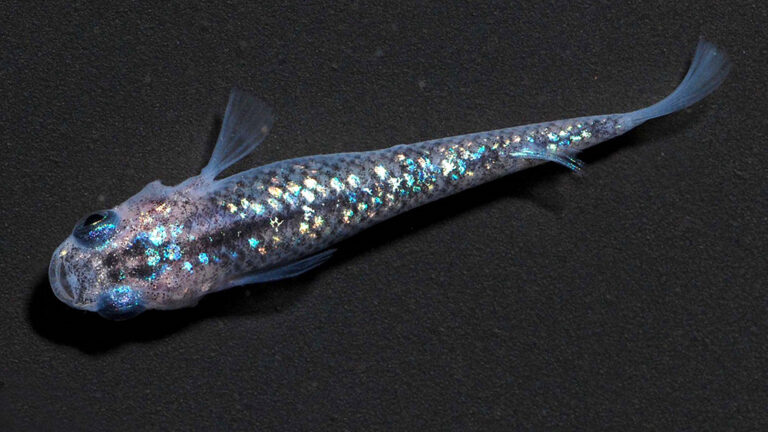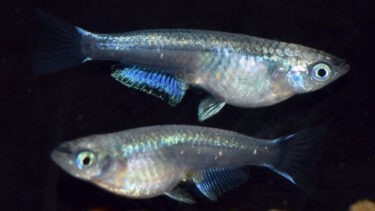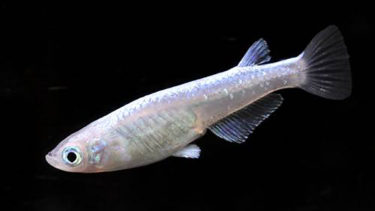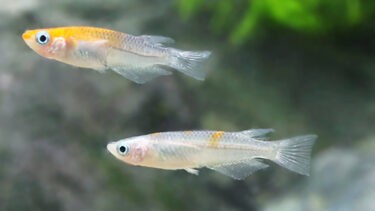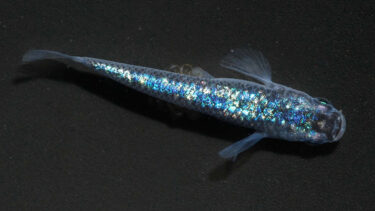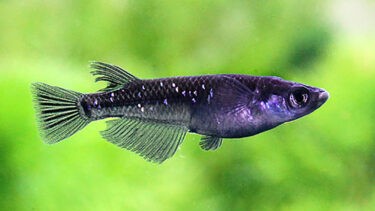The Yozakura killifish has yellow and black body colors with lame and translucent scales. The yellow and black body coloration makes it a distinctive variety that gives a very different impression depending on its coloration and intensity. Therefore, it is a killifish that has "translucent phosphorus" lacking rainbow chromatophores and "lame" expressing rainbow chromatophores. In this article, I would like to explain in detail the characteristics of the night-blooming killifish and how to keep them.
What is Yozakura Medaka?

Yozakura killifish will have yellow and black body colors with lame and translucent scales. Translucent phosphorus refers to the intermediate between normal and transparent scales. It is expressed by the lack of rainbow chromatophores in the killifish's chromatophores and is characterized by the translucent appearance of the body. The yellow and black body coloration is also characterized by the impression it gives depending on the coloration and intensity of the color.Therefore, even though they are collectively referred to as night-blooming killifish, they are often quite different from one individual to another. The rainbow chromatophores are expressed and reflect light. When these light-reflecting rainbow chromatophores collect on the scales, they have a shimmering light. This feature is called lame. The Yozakura killifish has inherited this lame trait from the Mikanuki killifish. Therefore, the medaka has "translucent phosphorus," which lacks rainbow chromatophores, and "lame," which expresses rainbow chromatophores.
Meteor killifish is a blue-colored killifish without a dorsal fin. The Meteor killifish is a variety that is able to express uninterrupted external light (light on the back of the trunk) by eliminating the dorsal fin, which is a drawback of the external light that is interrupted by the presence of a dorsal fin in normal trunked killifish [...].
The green-light killifish is a killifish that appears green due to the distribution of yellow spores on its blue body color. The green-light killifish is a new variety of killifish with a new shade of green. The green-light killifish has the same external light characteristics as the Bikan killifish and other species. In this article, we will discuss the green-light killifish's [...].
Origin of the Yozakura killifish
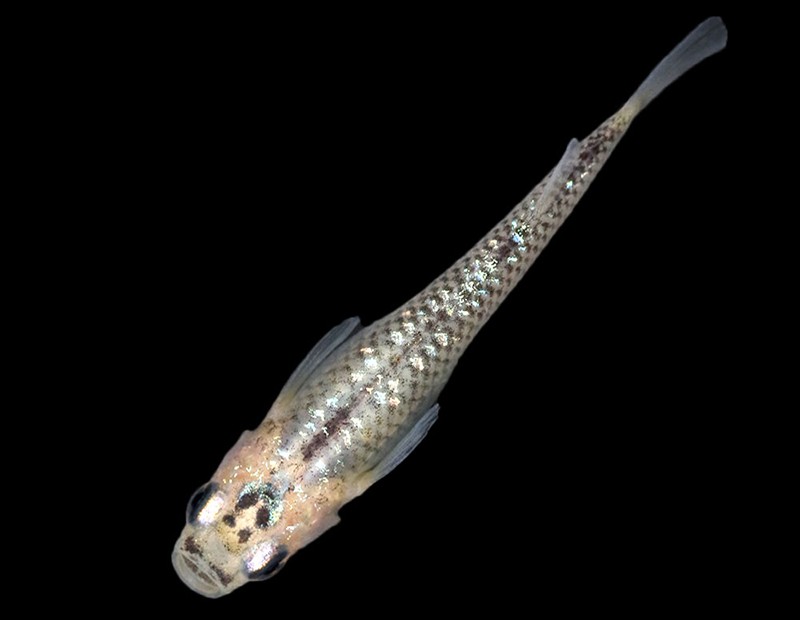
Yozakura Medaka will be a killifish created in 2017 by Mr. Tarumi Seiji of Ehime, Japan. The Yozakura killifish was created by crossbreeding yellow stemmed killifish (yellow cherry blossom) and aurora medaka (aurora stemmed killifish) and breeding them progressively. In the process of creating the Yozakura killifish, individuals with lame and shiny features were selected and crossed. This strain has been improved as a lame strain.
The Mikan-no-Medaka is a killifish with a bright blue glow on its back. There are various types of "Mikan-no-Medaka," including individuals whose body color is like that of blue killifish and white killifish. In this article, I would like to explain in detail the characteristics of these blue killifish and how to keep them. [...].
Aurora killifish will be a blue killifish with translucent phosphorus. Translucent phosphorus refers to the intermediate between normal scales and transparent scales. Therefore, having both characteristics makes the body color appear somewhat transparent. Aurora killifish has the potential to change the future of killifish [...].
Points to keep in mind when mixing swimmers
About Mixed Swimming,Some people often think that killifish can only be kept in the same species, but the real appeal of killifish is in combining them. If you are not particular about this, you can mix any kind of killifish with any other kind of killifish.However, it is best to be careful with killifish of different body types (e.g., Dharma killifish and Hirena killifish). If killifish of different body types are mixed with killifish of normal body type, problems such as inability to eat food may occur. However, there are people who mix killifish of different body types with those of normal body types, so there is no need to be concerned.However, each type of killifish, which is considered a high-end killifish, has its own distinctive appearance and shine, so it is recommended to keep them in a way that allows the enjoyment of each individual (type) rather than keeping them in many different species.
Points about spawning
The point about spawning was explained in the above section that keeping a variety of species is the best part of keeping killifish, and having various species swimming together when spawning will naturally produce killifish with the characteristics of various species. However, that is not always a good thing. For example, mixing red and white killifish can produce pink killifish, but not necessarily red or white killifish, or in the worst case, killifish with a color that is hard to describe. If you want red killifish, you should keep only red killifish because the probability of producing red killifish is much higher,I recommend that you think about what kind of killifish you want when spawning and what color and shape you want your killifish to be born, so that you will have less regret and confusion when raising them and find your own way to enjoy them.If it is just a hobby, I think you will enjoy it more if you stick to the methods that you enjoy, regardless of whether people complain about them. The following page explains the method of spawning and points to note, so please read it as well.
Many people who keep killifish want them to spawn. However, not many people know about spawning and what they need to do to prepare for it. This time, we would like to explain the method of spawning and the points to be noted [...].
After the spawning is over, the fry hatch and are born. There are many things to take care of, such as the fry's food and precautions to be taken. In this article, I would like to explain how to raise the fry and what to do about it. The period of time until hatching is over when the spawning is finished and the eggs are [...]...
Points to keep in mind when keeping a night-blooming killifish
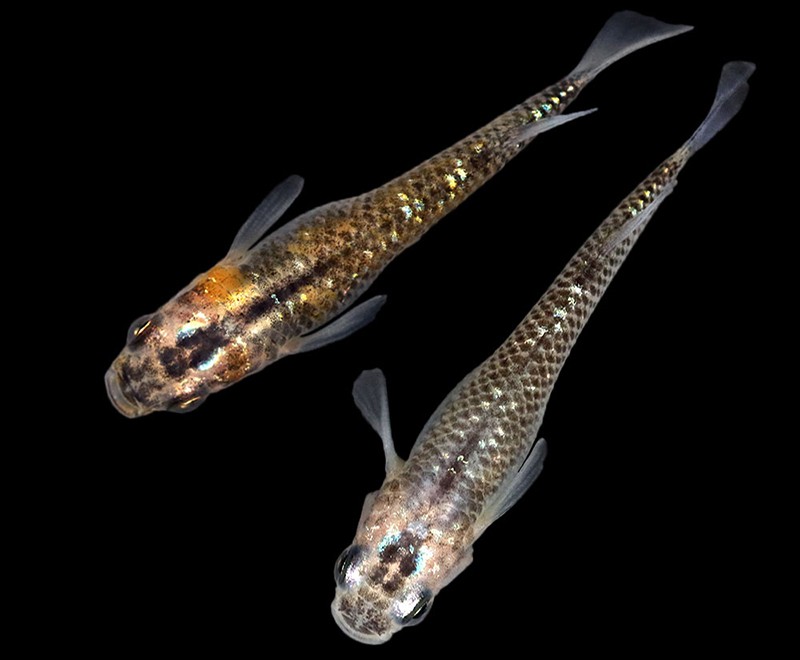
The night-blooming killifish is a killifish with yellow and black body colors, lame and translucent scales. It has two major characteristics: translucent phosphorus and lame. This makes it very individualistic, which is one of its charms.Preferences and characteristics vary depending on whether you choose an individual with a beautiful body color, a well-defined translucent phosphorus, or a well-defined lame and shimmering body color. The night-blooming killifish has a complex of numerous traits. It can be a very complex phenotypic variety. There are few breeds that have so many individual differences in one species. If you become interested in yozakura killifish, we recommend that you take a look at them at a specialty store.
Female killifish (mebina medaka) have black and orange body colors with translucent scales. The lame medaka has a characteristic orange color that is a darker shade of vermilion-red and is described by the name "persimmon color". The yellow and black body colors are marked by coloration and intensity [...].

